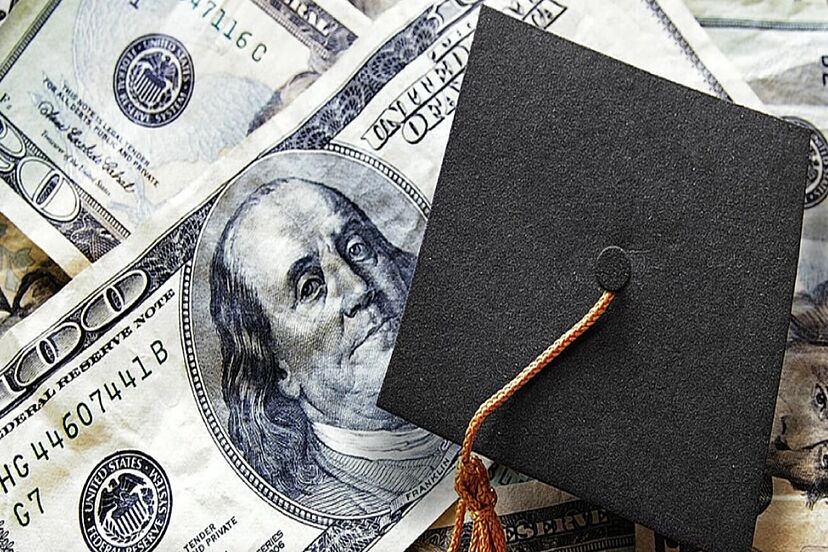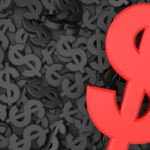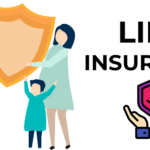How Long Does It Take to Pay Off Student Loan Debt in 2025?
For millions of Americans, student loan debt has become a defining financial obstacle that affects everything from mortgages to job decisions. Higher education may be accessible through borrowing, but the repayment process can be difficult and drawn out.
Your loan type, interest rate, repayment schedule, income level, and even your spending patterns all affect how long it takes to pay off your student loans.
In this article, we explain how your repayment schedule is determined, how long it typically takes to pay off debt, and how you can speed up the process to get your financial independence back.
Click to get a financial consultant
How Long Does It Take to Pay Off Student Loan Debt in 2025
The length of time needed to pay off student loan debt is mostly determined by the loan type and repayment plan chosen. The overall amount borrowed, applicable interest rates, and your financial capacity are further crucial factors. While private loan durations tend to vary more considerably by lender, federal loans usually offer repayment periods that span from ten to thirty years. You can manage your debt more effectively and prevent making overpayments over time by being aware of your options for repayment and how to decrease the time frame.
Average Repayment Schedule for Student Loans
Unless a different plan is selected, federal student loans typically default to a ten-year standard payback schedule. Although this option reduces the overall amount of interest paid, it has larger monthly payments, which some people may not be able to afford. In order to lower their monthly commitments, many borrowers choose extended programs. Many people take more than 20 years to pay back their student debts in full, according to research from the One Wisconsin Institute.
Generally speaking, extending the loan’s payback period results in much higher interest payments overall.
What Affects How Long You Have to Pay Back Your Student Loans?
How long it takes to pay off student loan debt depends on a number of factors. These consist of your income level, interest rate, loan amount, and repayment plan.
Choosing a Repayment Plan
The length of the loan is mostly determined by the design of your repayment schedule. While private lenders offer terms based on their own rules, federal repayment plans span from 10 to thirty years. Although shorter plans typically have larger monthly installments, they pay off faster and have lower interest rates.
Balance of Loan
Your repayment horizon is directly impacted by the overall amount borrowed. It usually takes longer to pay off larger debt, particularly if you are just able to make minimum monthly payments. You may also be unable to accelerate repayment with additional contributions if your budget is more constrained.
Interest Rates
Your total payback load may rise dramatically as a result of interest. Higher interest rate loans will take longer to pay off, especially if you can’t make the minimal payments. Interest rates on newly granted federal loans have increased, with PLUS loans rising beyond nine percent and undergraduate loans above six percent.
Profits and Financial Adaptability
Higher income earners typically have more financial flexibility to contribute more to their principal. This lowers the overall amount of interest paid over time in addition to shortening the payback period. Making prudent use of extra money can significantly impact how soon you pay off your debt.
Options for Repayment of Federal Loans
The Standard Plan
This fixed repayment option has a regular monthly payment over a ten-year period. For federal borrowers, it is the default plan unless they choose a different one.
Plan with Graduation
Lower monthly payments are made at the start of this plan, and they progressively rise every few years. Borrowers who anticipate an increase in their income over time will find it suitable. A longer term of up to 30 years may be possible with consolidated loans.
Extended Schedule
Under this option, federal loans can be repaid over a maximum of 25 years. Payments may stay the same or rise over time. To be eligible, borrowers must owe more than a predetermined minimum amount.
Plans Driven by Income
You can base your payments on your family size and discretionary income under a number of schemes. With loan forgiveness available following a certain payback period, usually twenty to twenty-five years, these schemes seek to keep payments manageable.
Plans for Paying Back Private Student Loans
Loan terms set by private lenders typically include repayment lengths of five to fifteen years or longer. When refinancing through a private lender, borrowers can select for a shorter term to pay off debt faster, but they give up federal protections including public service forgiveness choices and income-based plans.
How to Quickly Pay Off Student Loans
If you want to pay off your debt as soon as possible, think about the following strategies:
Select the Best Repayment Plan
A shorter payback schedule can result in lower interest costs and a quicker loan settlement. This is only feasible, though, if your budget can support larger monthly donations.
Don’t Just Make a Contribution
Making monthly payments in excess of the required amount reduces the principal balance faster, which lowers the interest earned and speeds up the repayment period. This technique is especially effective for borrowers not enrolled in income-driven plans that offer forgiveness after a defined period.
Refinance on Improved Terms
You may be able to get a shorter loan term or a lower interest rate by refinancing with a private lender. However, access to federal relief programs such as postponement, forbearance, and future forgiveness initiatives is lost when federal loans are converted into private loans.
An Illustration of a Student Loan Repayment Situation
Early student loan repayment has its benefits, but depending on your objectives, it can be wiser to use the money for other purposes, including investment or home savings. This is a condensed comparison of payback under the two methods:
Let’s say a borrower makes $38,000 annually and has $25,000 in student loans with a five percent interest rate. Monthly payments under the government SAVE plan may be about $43 for 20 years, after which the remaining amount could be forgiven. The borrower would make a total contribution of little over $10,000 during this time.
The identical loan, on the other hand, would need monthly installments of more than $250 on a typical ten-year plan, for a total repayment of more than $31,000. The borrower can become debt-free in half the time with forgiveness, even if it might not be possible under the regular plan.
How Loan Amount Affects Repayment Time
In order to lower monthly payments, borrowers with larger student loan amounts sometimes select repayment plans with longer terms. But over time, this raises the overall amount of interest paid and lengthens the debt load. Choosing shorter periods or making extra payments may be a more economical course of action for people with the financial means.
Examining Other Options for Federal Repayment
Standard, graded, extended, and income-driven repayment plans are among the several structured programs available for federal loans. Understanding how they operate will help you match your debt approach with your income and long-term objectives. Each is made to fit various financial situations.
Advice for Quickly Repaying Student Loans
Reduce the duration of your debt by refinancing, paying more than the minimum amount each month, or lowering your loan term from the start. Examine various repayment scenarios using a loan calculator to find the strategy that will match your financial objectives and save you the most interest.
Your loan balance, interest rate, income, and repayment strategy are some of the variables that affect how long it takes to pay back student loan debt. In order to reduce interest and financial strain, some borrowers may decide to pay off loans as soon as possible, while others may profit from income-driven plans that spread out payments over time.
There is no one-size-fits-all repayment plan; yours is a unique path. You can make a plan that fits your lifestyle and helps you pay off student loans on your own terms by analyzing your income, expenses, and financial goals.
In conclusion
There is rarely a one-size-fits-all approach to student loan repayment. It may just take a few years for some people with careful repayment schedules and greater incomes, while it may take ten years or longer for others. Reducing the duration and expense of your debt requires knowing your loan conditions, making the best repayment plan, and making regular payments.
The road to financial independence starts with well-informed choices and focused activity, regardless of your goals—whether they are to follow a conventional plan or pay off your loans early. If you remain proactive, you will be able to achieve student loan independence.










